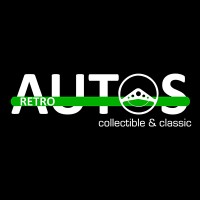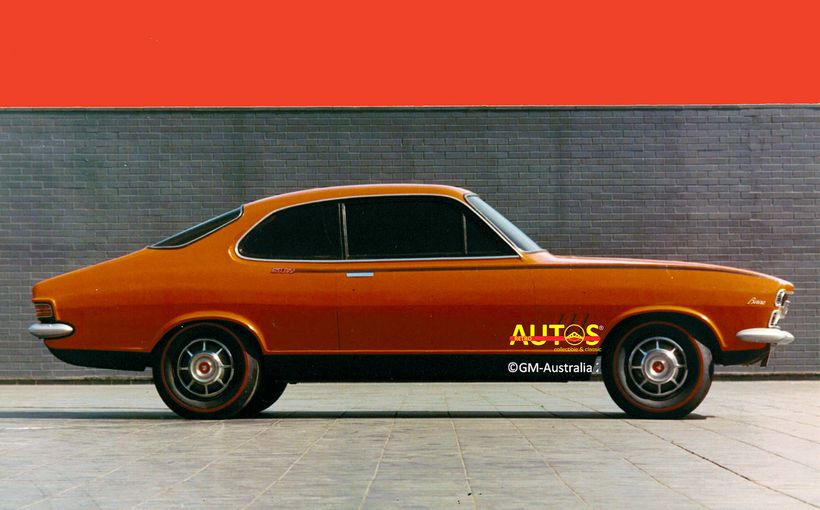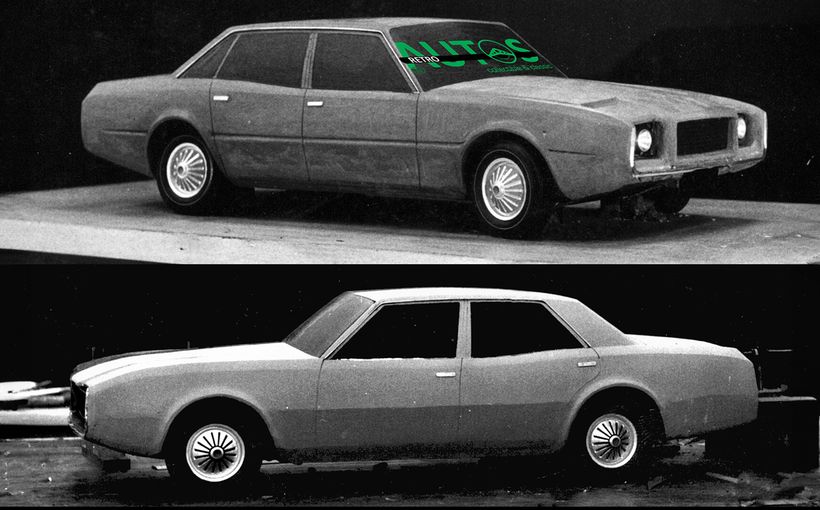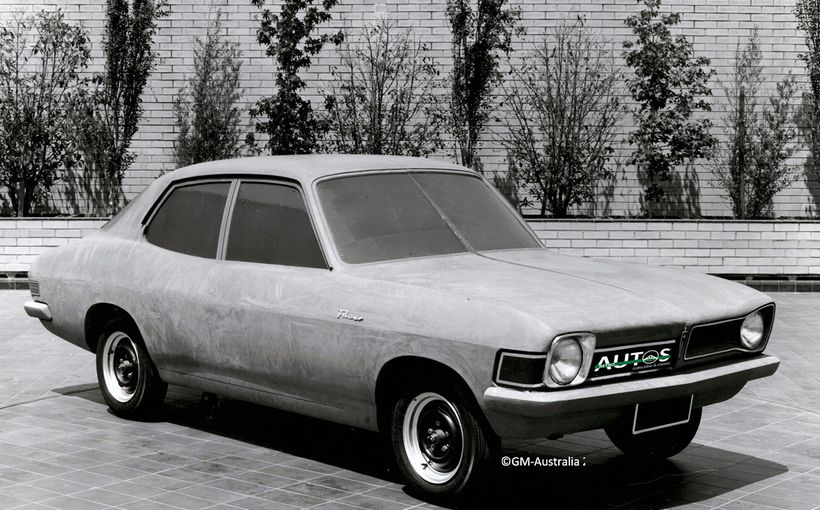WB Holden cancelled: “Dumbest thing we ever did”
Indecisiveness played a pivotal role in the cancellation of Holden’s HV and WA models, and the development of the HJ. But it was the opposite for the WB.
Decisiveness sealed its fate!
The WB program began in mid-1974, following the cancellation of the WA range caused by Holden’s deteriorating financial position and falling sales. I’ve written about the HV, HJ and WA in recent editions of Retroautos. (Links are at the end of this story.)
Based on the HQ body, the WB was supposed to comprise a Kingswood/Premier “short” wheelbase sedan, Monaro coupe, long wheelbase wagon, Statesman/Caprice and commercials. But, by the time the WB emerged in 1980, it had been reduced to just the commercials and the Statesman/Caprice.
The WB’s fate was decided by Holden’s then managing director, Charles “Chuck” Chapman. Unlike many of his predecessors, he was willing to make the hard decisions.
Automotive writer and publisher, John Mellor, interviewed Chapman just prior to his retirement in 1987, for the November edition of his Automotive Reviews magazine. Mellor prefaced the interview by summarising the situation at Holden, during the era of the HV, HJ and WA, before Chapman arrived in January 1976.
“Those on the sidelines questioned apparent inaction as decisions that needed to be taken were delayed by lack of funds or by long-standing executives who had never known what it was like to work in the shadow of adversity.”

The financial pressures and adversity Mellor mentions had been accumulating for a number of years. The company’s market share had dropped from 30% in 1973 to 25% by the end of 1974. Ten years earlier it had been 40%. Profits in 1974 were down 2% compared to 1973. To make matters worse, Holden’s domestic volume continued its decade long decline, despite the Australian car market expanding year on year. These grim statistics would not have been well received by GM in Detroit.
A stable future?
As I wrote in the previous edition of Retroautos, although the numbers made for depressing reading, at the beginning of 1975 Holden’s top managers could reasonably argue that a financially stable future might be found with the products they now had in the pipeline. The WA was gone, supposedly “saving” $80 million. The new TX Gemini was about to hit the showrooms in February. The 1974 LH Torana was doing good business. It was to be followed in three or four years by something locally developed or possibly the new V-car from Opel. The HJ, HX and HZ sedan, wagon, coupe, commercial and Statesman/Caprice models would take care of the big car market until the WB arrived in 1979/80. It all sounded plausible, assuming everything went to plan. Which it didn’t.
At the end of 1975, Holden’s executives could boast of a 28% increase in profits (from $14 million to $18 million), but that was about all. Market share remained at 25% and domestic production had flatlined. Holden still employed over 25,000 people and had manufacturing operations in the major capital cities. In short: too many people, too many factories, too much cost and not enough sales revenue to cover it all. Let’s hear from John Mellor again, as he continues his observations of Holden pre-Chuck Chapman.
“Financial pressures, created by a series of careerist American managing directors who failed to take the knife to the size of the organisation because it might rock the boat, were building up to crisis point.”
Towards the end of 1975 GM announced that Holden’s managing director, Damon Martin, was returning to the USA, to be replaced by Chapman. Insiders knew that Chapman’s job was to restore profits, sales and market share via a product led recovery and drastic cost cutting.
Chapman held two engineering degrees and an MBA. As GM’s chief engineer in Europe, he had been deeply involved in turning around Opel’s fortunes with superior product quality to the point where it overtook VW in sales. He was also the champion of Opel’s V-car, which would become the VB Commodore.
Changes and Cost Cutting
In mid-1975, Joe Schemansky had reached GM’s mandatory retirement age. His role of design director was taken by Leo Pruneau, who had been in the USA for the previous three years. Dick Finnegan, who had taken over from Leo as assistant design director in 1972, stayed on in that role. Finnegan would leave in November 1977 to go to GM in Brazil as its design director. In his place came American John “Kip” Wasenko. Like Chapman, he’d been at Opel working on the V-car.
When Pruneau arrived at Holden he was briefed on the cancelled WA program, the WB’s development and the Torana replacement scenarios. The major problem the design team had faced with the WB was trying to create something fresh and new from the HQ’s shape, which dated back to 1968. The design team wanted to eliminate the dominant “eyebrows” over the wheel arches. But that required expensive sheet metal changes to the fenders and doors. Such changes had been vetoed.
As the WB’s development progressed during 1974-75 and Holden’s finances worsened, the design team was further restricted from making any significant styling changes. In the end they had to re-use the HQ’s A pillars, cowl, windscreen, inner structures, driveline, suspension, exterior sheet metal, front door glass and roof. Indeed, anything that could be carried over was to be carried over.
Another major set of problems during 1975 was that the economy was faltering, the Federal Labor government was in disarray and the impact of the oil crisis was still being felt. On top of this, Holden’s top management could not make up their minds about the WB’s role in the line-up nor its size. There was ongoing debate about the viability of continuing with two wheelbases.
Consequently, the design team was tasked with creating a Kingswood/Premier on the longer 114 inch/2896mm wheelbase. The result was an attractive and imposing car with a formal roof line that may have stood up strongly to the XD Falcon.



One thing was certain, there would be no WB coupe. Sales of the HJ coupe had dwindled to just under 1000. Cancelling it was an easy decision.
By the end of 1975 it has been decided that all WB models would be built on the long wheelbase. Opel’s V-car was now in the product line up, perhaps as a Torana or Kingswood replacement. No decision had been made.
That’s when Chapman walked through the doors at Fisherman’s Bend.

Chapman moved quickly to bring clarity to the future product range. One of his early decisions was nominating the V-car as the company’s mainstream car. This aligned with GM’s global program to downsize its fleet. As a result, the WB was positioned in a supportive role to the V-car. The Torana was to be phased out and replaced by GM’s global J-car.
From the packaging and marketing viewpoint, however, a long wheelbase WB Kingswood/Premier created a big size gap between it and the V-car. It also threatened the prestige of the planned six window WB Statesman/Caprice, which was in development. Despite these issues, Chapman believed it was worth the risk.
Naturally, the accountants suggested a very “low cost “version of the long wheelbase WB Kingswood/Premier. Rather than spend money on the proposed design, their idea was to use the existing Statesman body. The 3.3 litre six engine would be standard. Essentially, it was a re-run of the poor selling 1971 HQ Statesman Custom: a Kingswood in the Statesman body shell. Two operational prototypes were built, but events overtook the idea.
Holden lost money in 1977 and 1978. In mid-1979, against the background of the second Middle East oil crisis there was general uncertainty about the viability of large cars into the future. Even Ford was wondering if its new XD Falcon was the right car for the times. Holden’s research was predicting that the market for large family sized cars could shrink to just 15% of the total market, about 90,000 cars.
Based on this information and the financial situation, Chapman decided to cancel the WB Kingswood/Premier, either as a short or long wheelbase, limiting the range to the commercials and the six window Statesman/Caprice. This meant that beyond 1980 Holden would not offer a large family sedan and wagon.

The WB commercials appeared in March 1980 and the Statesman/Caprice in May. By the end of 1980 the UC Torana/Sunbird had also been pensioned off, leaving the Commodore to cover everything between the Gemini and Statesman until the J- car, the Camira, was released in 1982. (There are links to my WB Statesman and J-car design to driveway stories at the end of this edition.)

“The worst decision I ever made was over the WB.”
The great irony of the WB’s development story is that the cancellations of the HV and WA programs, and delays in getting the HJ started, were largely because of management indecisiveness. Now, the WB’s outcome was the result of active decisiveness!
But it is no surprise. In the Automotive Reviews interview Chapman said:
“Once you decide to do something, you get on with it.”
But was it the right decision? Chapman spoke directly to that question. In an admission that was typical of his no-nonsense approach, he said:
“I guess the worst decision I ever made was over the WB. At the time we came out with the WB we had two versions—a low-cost version which would have been like a Kingswood/ Premier—and the Statesman version. Late in the day, as we got close to production, we had some serious problems so we had to defer the low-cost version. This was the time when we were working under the momentum of all these predictions that the high car group (large family cars) was going down to 15%. About the time the car was going to be introduced, I was persuaded to drop the low-cost version. That was the dumbest thing we ever did. I have always felt that, even on a long wheelbase, a six cylinder low-cost version would have done much better than the Statesman version because, by the time we come out with the WB, the fuel crisis had reached its peak of hysteria and we had trouble selling the WB with the V8…..I think we would have held our penetration and made up for the loss of the short wheelbase model.”
Holden’s design director, Leo Pruneau, agreed with Chapman that the axing of the WB Kingswood/Premier was an error. In an interview with Wheels magazine shortly after he retired in 1988 he said:
“I thought it was wrong, wrong, wrong. They got tired of me objecting to what was planned….we should have kept making the Kingswood alongside the Commodore; we would have had two car lines filling two market slots and we could have rolled with market trends.”

Charles “Chuck” Chapman died on 18th December, 2013. John Mellor, writing in his GoAuto publication, said of him:
“His legacy was that he was the first American in charge at Holden game enough to make the changes necessary to take Holden by the scruff of the neck and set it up for the more competitive industry that was to come. Holden made a profit for 17 straight years after Mr Chapman’s watch, accumulating some $4.3 billion in pre-tax profit for Holden in that time.”

Story links: WB Statesman, J-car/Camira, HV Holden, HJ Holden, WA Holden.
Retroautos is written and published by David Burrell with passion and with pride. Retroautos’ stories and images are copyrighted. Reproducing them in any format is prohibited. Retroautos is a registered trademark. Reproducing it in any format is prohibited. Special thanks to John Field and Richard Ferlazzo who opened Holden’s design studio archives a few years ago so we can see these wonderful images.



























